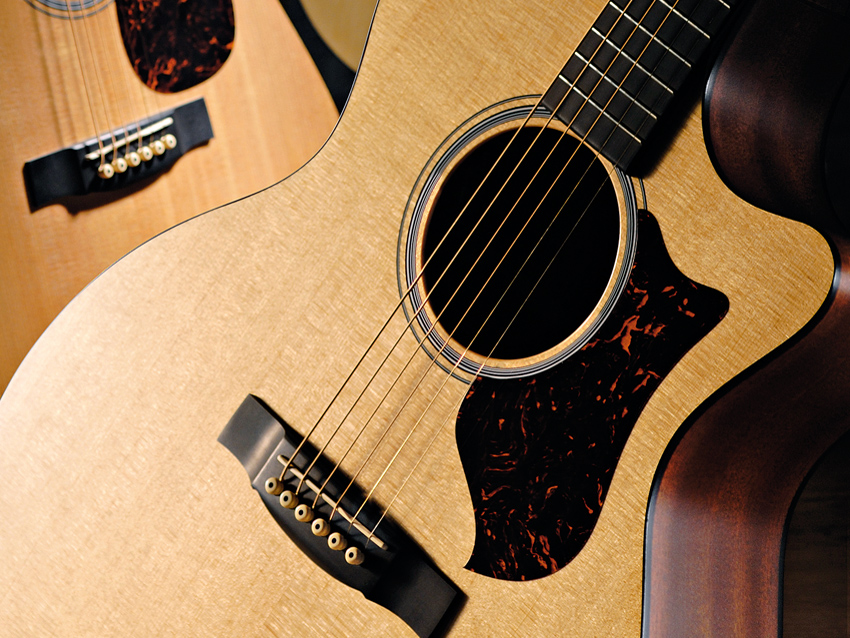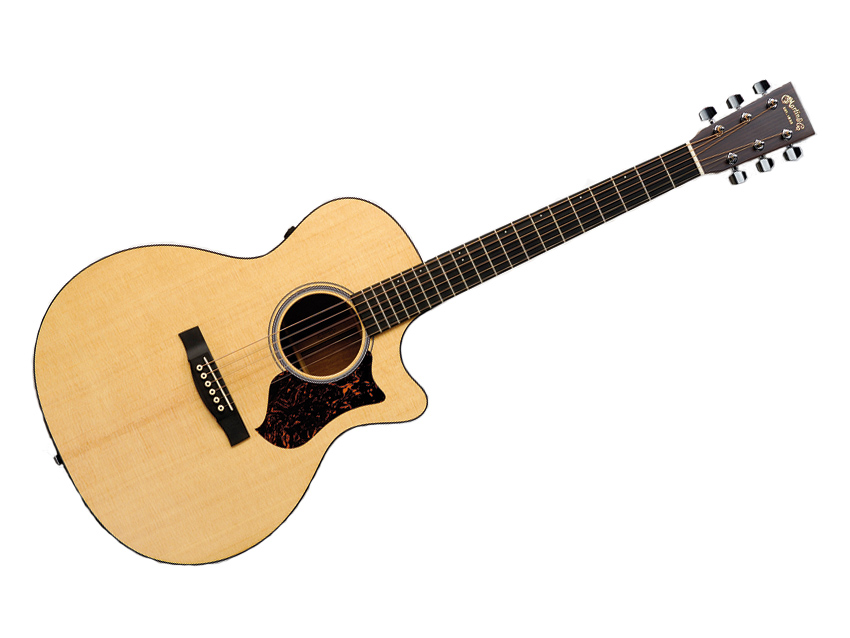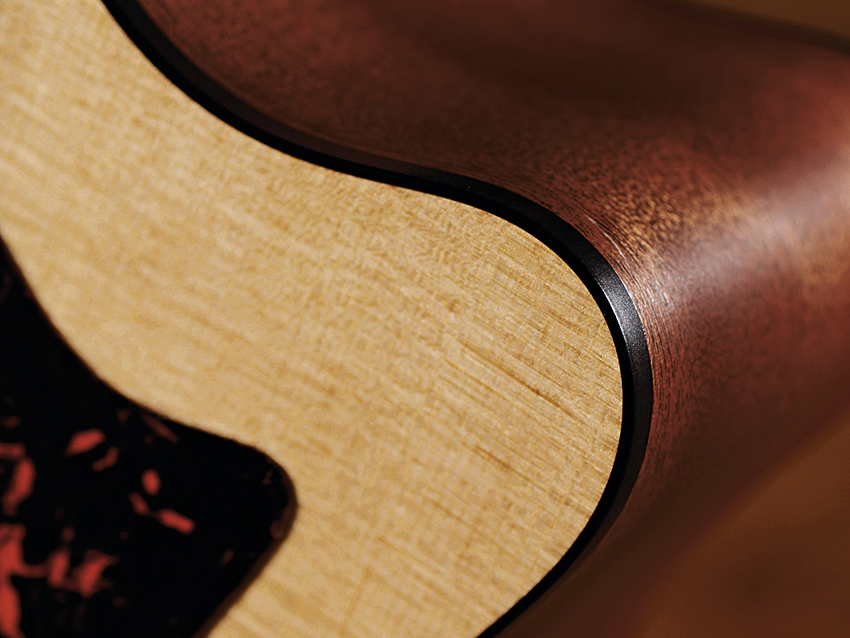MusicRadar Verdict
A solid, loud and powerful performer capable of handling a range of styles.
Pros
- +
Build quality. Beefy output. Set-up.
Cons
- -
Plugged-in performance. Can feel a tad cumbersome.
MusicRadar's got your back

Martin GPCPA4

Martin GPCPA4

Martin GPCPA4
Founded over 175 years ago, CF Martin is arguably the most prestigious and recognised name in the world of acoustic guitars. For the most part, however, its enviable reputation has been built on the success of its dry acoustics, that is, without any onboard electronics.
Recent years have seen the Nazareth-based, family-owned company turn its attention to the ever-growing electro-acoustic sector of the market. Industry figures indicate that electro-acoustics sales made up 37 per cent of the acoustic guitar market in 2010, up from 31 per cent in 2005.
"The GPCPA4 seeks to combine a hefty low-end from its large lower bout with a sweetness from the narrow waist."
In partnership with long- time supplier Fishman, Martin launched the all-new Performing Artist Series at NAMM 2010. The new range quickly became Martin's fastest-growing product line and has received rave reviews from all quarters - including us.
The combination of high-quality craftsmanship and the best in modern amplification proved a major success on the high street for the company. It's little surprise, then, that 2011's winter NAMM saw Martin release three brand new Performing Artist Series 4 (PA4) gloss-top models.
Priced at £1,359, this is one of the most affordable Performing Artist Series guitars yet. It's an all-solid grand performance body - the series' newest body style - with Venetian cutaways.
It comes loaded with Martin's new treated SP Lifespan strings and included in the price is a black TKL hard case. All good.
To assist in reducing costs in pursuit of a lower, more attainable price, Martin has utilised less expensive woods while seeking to maintain the high performance characteristics of the earlier models.
Want all the hottest music and gear news, reviews, deals, features and more, direct to your inbox? Sign up here.
In place of mahogany, the satin-finished back and sides is constructed from African sapele, a wood very similar in appearance and tone to mahogany and long used by Taylor. Various synthetics are employed too: a bone- substitute, white Corian, for the nut and saddle; an ebony-substitute, black Richlite, for the fingerboard and bridge material; and black Boltaron for the binding. Simple dot inlays serve as fretboard markers.
The onboard Fishman electronics system is a simplified version of that found on the PA3 guitars. The F1 Analog system is stripped back to the basic necessities of a gig.
The two push 'n' twist rotaries from earlier models remain, though it lacks the clever sound imaging, compression and automatic anti-feedback technology. All that remains is an onboard tuner (which mutes the output when engaged), tone and basic phase control.
Many found the full-fat Fishman system aboard the PA3 guitars a little too fiddly and fussy; the F1 is a clean-cut alternative.
It featuresbook-matched, polished gloss, Sitka spruce soundboards, showing a tight pronounced grain. Underneath, it makes use of Martin's hybrid A-Frame scalloped bracing.
One of the best features of the Performing Artist models is the all-new slim profile neck, which has been carried forward to this PA4 guitar.
This design features a more parallel taper at the 12th fret, facilitating a more comfortable playing width in the higher registers. Interestingly, the bridge spacing is also modified to 55.6mm (2 3/16-inch), thereby splitting the difference between Martin's two traditional spacings. Comparing this modification with our faithful D-18 and OMC-28, the difference is slight but noticeable.
As you'd expect for a guitar designed to be at home on the stage, its fitted with two strap buttons; one in the standard position at the base of the guitar, the other on the treble side of the neck stack. This position has become favoured by gigging acoustic players due to the way the guitar is pulled into the player's body.
The battery compartment and input jack are located adjacent to the base strap button. When hanging on a strap, access to the battery housing is compromised, but Martin claims the battery life of the F1 Analog is 200 hours.
Our only other niggle with the F1 is its display screen, which we found difficult to read when tuning the guitar in the standard seated position. Added to this, when in tuning mode, the alpha string indicator switches between lower and upper case, which can cause confusion with both 'G' and 'b' looking like the number six.
Build
Martin's newest body shape, the Grand Performance, seeks to combine a hefty low-end from its large lower bout with a sweetness from the narrow waist. Measuring 397mm (15.6 inches) at its widest, the Grand Performance is verging on jumbo-style lower bout dimensions. This contrasts with a tight waist measuring less than a Martin OM.
One key design feature of the GPCPA4 is its depth. Though tapered at the upper bout, the GPCPA4 measures a hefty 112mm. This increased sound chamber capacity affords the Grand Performance greater volume and projection. The cost is a body size that can feel cumbersome to some.
The standard of woods used is impressive, as evidenced by the bookmatched, quarter-sawn Sitka spruce top, which displays excellent detailing and texture. Construction standards are again admirable and only serve to underline Martin's consistency.
In the hand, the GPCPA4 feels sturdy, robust and ready for a life on the road.
Sounds
As with the DCPA4, the GPCPA4's output is brighter, even livelier, than that Martin tone. With a strong bass, this Grand Performer punches out a mid-range with clarity and precision.
As expected, the GPCPA4 offers plenty of volume, excellent levels of sustain and a tight top end. While the DCPA4's output suitsstrong chord work, the GPCPA4's timbre is more versatile and ticks more tonal boxes, appealing to players who might span multiple genres.
Plugged in to our house Schertler David, the GPCPA4 offers a versatile, usable tone. While the central characteristic of a punchy, raspy tone remains, tweaking the controls allows you to enter into the room marked 'warmth'.
In essence, however, this Grand Performance's amplified tone is full and hard-hitting and well suited to gigging duties.
In terms of their playability, build quality and affordability, Martin has again produced a fantastic electro worthy of inclusion in the PA Series.
Since its launch, the Performing Artist Series has been accused of being too Taylor-like. We'd suggest that with the fourth generation of PA guitars, Martin has produced electros even more akin to their biggest rivals in both form and tone.
Whether that's a good thing is ultimately up to you.
Steve Harvey is senior content producer for Pro Sound News and also contributes to other Future brands. He has worked in the pro audio industry — as a touring musician as well as in live production, installed sound, and equipment sales and marketing — since November 1980.